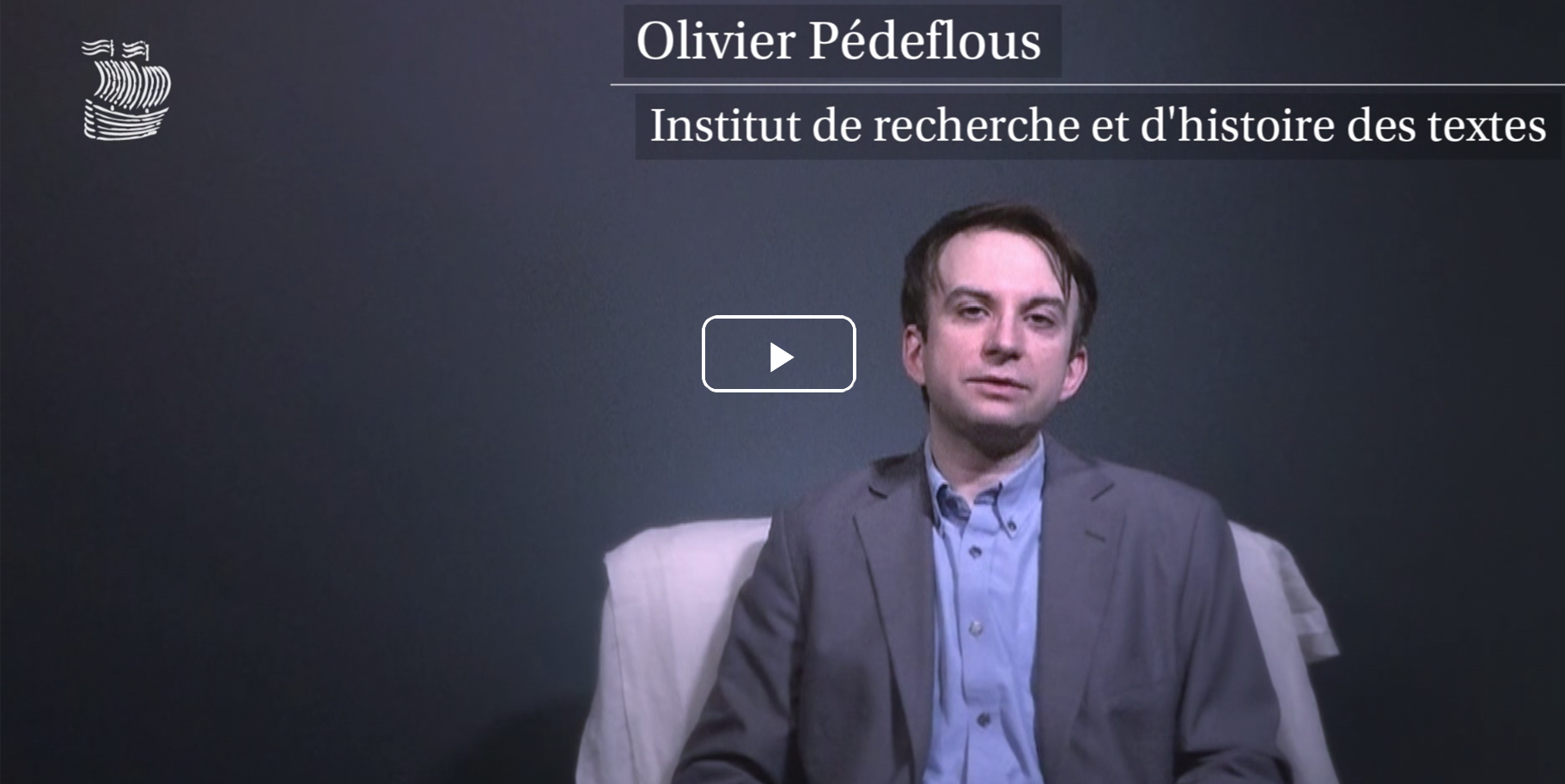Rabelais
Rabelais is a signal figure in Martin Bodmer’s collection. His work marks one of the high points of the European Renaissance, and the first editions of his Pantagruel fiction have long been highly sought after by bibliophiles.
In his Quart livre des faits et dits héroïques de Pantagruel [Fourth Book of Pantagruel’s Heroic Works and Sayings] (1552), Rabelais turns his attention to the Swiss: “The Swiss, now a strong and warlike people, may once have been, for all we know, sausages [Saulcisses] themselves: I wouldn’t swear against it…”
Irreverence! But time heals all wounds. Today, the famous war of the Andouille sausages is no longer raging…and Rabelais is now quite welcome in Switzerland. Especially in Geneva—this in spite of the fact that in the same Quart Livre, the narrator labels certain “Matagots” and “Cagots” as “devilish false Geneva Calvins.”
Genevans, generously, have not held on to any grudge. The fact that Geneva is today a privileged site of Rabelaisiana proves it. Two collections in particular would make Maître François proud: first, Martin Bodmer’s in Cologny and more recently, that of Jean Bonna, whose catalogue devoted to the 16th century has been released thanks to careful work of Vérène deDiesbach-Soultrait (readers can find, in addition to the volumes of the Bibliotheca Bodmeriana, the full reproduction of two pieces from this collection on the Bodmer Lab site).
Rabelais is a signal figure in Martin Bodmer’s collection. The Homer of the jesters has always been ideally suited to seduce collectors: his work marks one of the high points of the European Renaissance, and the first editions of his Pantagruel fiction have long been highly sought after by bibliophiles.
Bodmer assembled a series of exceptional pieces. Firstly, he gathered ten editions of Rabelais books, comprised of both individual volumes and of complete or selected works.
Most of these volumes were printed in Rabelais’ own lifetime, including some in Gothic script (the rarest among them).
To these relics from the reigns of François I and Henri II, the collector added a representative from each of the three editions of Johann Fischart’s important 16th-century German adaptation of Gargantua: the Geschichtklitterung.
Finally, there is the most remarkable vestige among the Rabelaisiana pieces: not a book written by Rabelais, but a volume he annotated by hand. A collection of Greek texts published in Paris at the beginning of the 16th century attests to the pioneering first use of printed Greek characters in France. Rabelais received his training as a Hellenist from this book, learning the language of Plato around 1520.
Rabelais at work, Rabelais as reader and rewriter, Rabelais as translated and read by other great European minds: the author of Pantagruel embodies and anticipates the “Weltliteratur” orientation which Martin Bodmer saw as forming the centre of his cultural enterprise.
Romain Menini
Université Paris-Est Marne-la-Vallée
Olivier Pédeflous
Institut de recherche et d’histoire des textes (CNRS)
“Brother François Rabelais, of Chinon”
Rabelais' library was voluminous; it was, however, separated and dispersed. There are at least thirty titles dotted across Europe and the United States, bearing the signature of Pantagruel’s author. The volume held in Martin Bodmer’s collection contains the Sphaera of Pseudo-Proclus, Theocritus’ Idylls, several of Plutarch’s Moral Works and Hesiod’s Works and Days. Read
Anatole France’s Quart livre
A haunting, fascinating journey, the Quart livre figures prominently in the Bibliotheca Bodmeriana. Martin Bodmer purchased a precious piece from 1552 which had previously belonged to Anatole France, the star of the French literary world before 1914 and fervent admirer of Rabelais. Read


